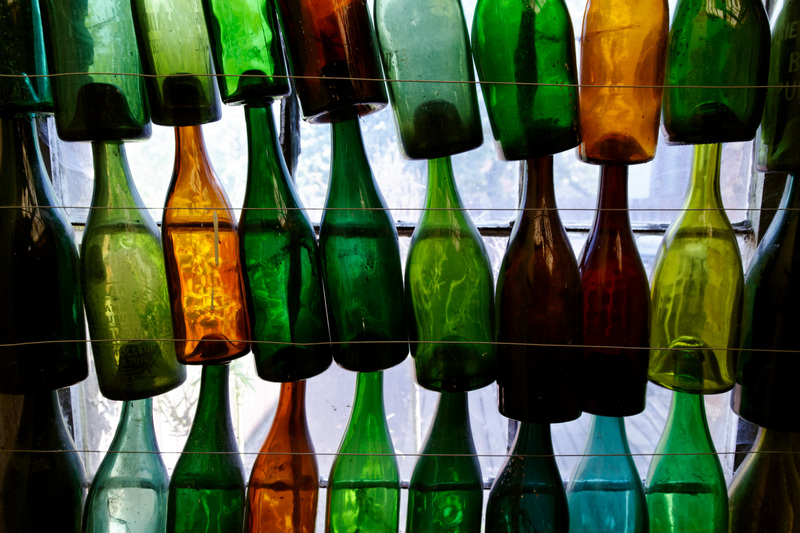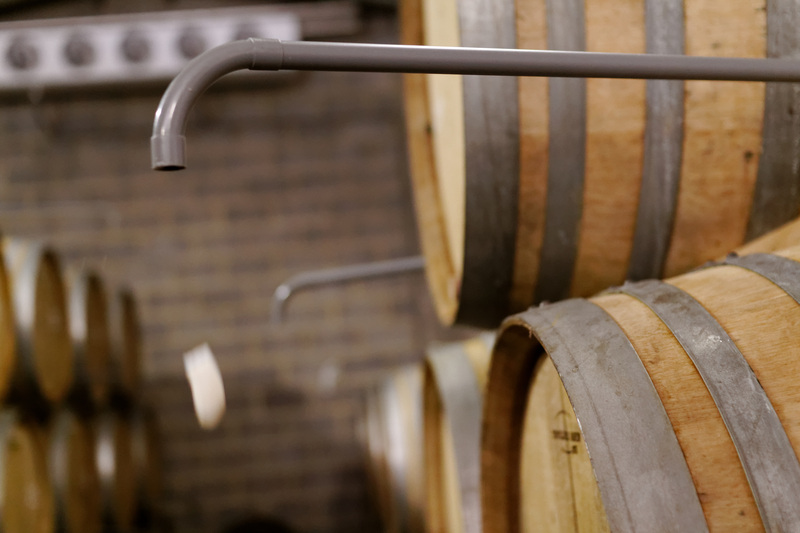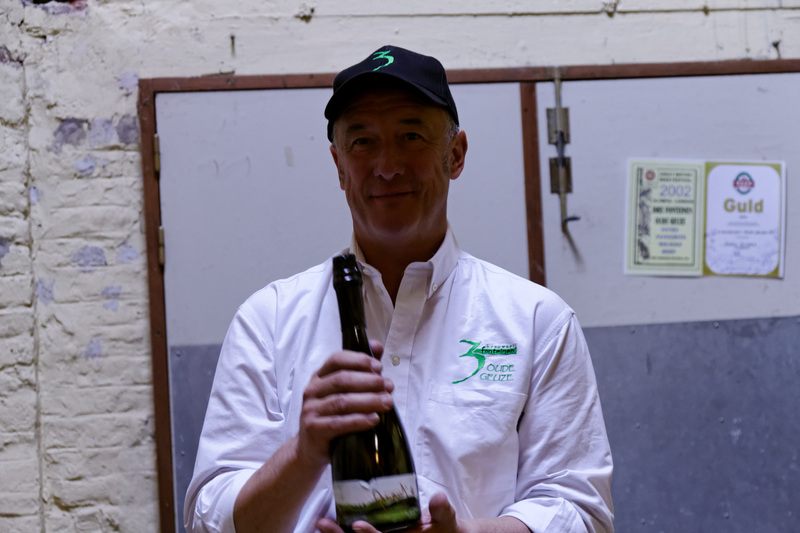Lambic

Old lambic bottles |
I can still remember my first sip of lambic. I was sitting in the tasting room of the Cantillon brewery in Brussels after completing the brewery tour, all eager to try the final product. The shock of actually tasting it was all the greater. It was sour! So sour it almost burned. And what's more, it was thin and tasted of metal and grain. This was lambic?
The reason it tastes so different from other beers is because of how it's produced. Instead of adding a carefully cultivated yeast strain to the wort to make it ferment into beer, the lambic brewers simply blow cold air over the wort to cool it down. Then they tap the beer onto wooden casks and leave them alone for a while. After a couple of weeks fermentation usually starts spontaneously.
The consequence is that brewers have very little control over what sort of bugs go to work on their worts. In practice, they have some measure of control through choosing the time of year that they do this, and various tricks they can play with temperature. One also assumes the bugs living in the casks have a role to play. But essentially, these beers are fermented by a mix of whatever microbes float past in the air, and the microflora inside the casks.

Foam overflowing as gueuze ferments |
This is what makes the beers so thin and sour: the wild yeasts produce lots of acid. It seems reasonable to suppose that originally all beer was fermented this way, but that eventually people found some yeasts that made nicer beer than other yeasts, and found a way to keep reusing these yeasts. Brewers using wooden casks can often be heard to praise a specific cask for producing particularly good beer, probably because of the cask's unique microflora. Reusing the yeast is no harder than keeping some of the post-fermentation sludge and throwing it into the next beer, and there's plenty of medieval sources to indicate that people were systematically doing this.
So people eventually found yeasts that didn't make sour beer, and gradually the use of these spread, so that the production of sour beer became less widespread. The exact timing here is difficult to establish, but it's clear that sour beers (of various kinds) were widespread in Europe until at least the 1850s. The ability to brew non-sour beers must have been widespread considerably earlier, but even so, sour beer took a long time to die, for whatever reason.
By 1900 it seems that sour beer was becoming something of a rarity. There was gose, and Berliner Weisse, the lambics (of course) and a few others here and there, but overall, sours were going strong only in Belgium. Why that should be I really have no good answer to. In any case, it didn't last. Eventually pale lager started making inroads in Belgium, too, especially after World War II, and lambic felt the pressure more than the other native beer styles.
As lambic declined, many of the producers went bankrupt, and many of those who did not started polluting their products with fruit syrup to make it sweet. But some brewers, particularly Jean-Pierre Van Roy (of Cantillon) and Armand Debelder (of Drie Fonteinen) stood firm and refused to cheapen their products. They must have seemed absolutely insane to the commercially minded brewers at the time, but the tide was in fact starting to turn.

Armand Debelder, product in hand |
Eventually, the craft brewing revolution started with Michael Jackson and the first US craft brewers, and gradually people woke up to the realization that beer could be more than just cheap swill. As part of this process, appreciation for the unique beer styles of Belgium also grew, and particularly for the most unique of them all: lambic.
Today, the lambic styles are widely regarded as perhaps the very finest beers of all, and the lambic brewers are held in particular veneration by beer enthusiasts world wide. The most highly regarded of all are probably, you guessed it, Cantillon and Drie Fonteinen. And there are even signs that the tide has not just stopped, but even begun to turn, with the establishment of new lambic producers.
As for me, today some of my absolute favourite beers are lambics. The Cantillon Lou Pepe Kriek, for example, has to be one of the best beers ever made. It's sour and thin, of course, but somehow it's so harmonic with grapes, wood, leathery cherry and cheese flavours, as well as long, deep notes of almonds, that I don't mind. They say the almond flavour comes from the cherry stones. If it's that simple I wish every kriek used cherry stones.
As for those of you who haven't tried it yet, I think you should try at least one lambic, and not give up after the first attempt. Hanssens are difficult to find, but their beers are much softer and mellower, without any loss in depth, so I would recommend starting there if you can.

Gueuze from new producer Tilquin, about to be released |
Similar posts
The price of ale
One thing that struck me very strongly when I was on the Toer de Geuze in 2012 was that the pricing for beer was totally wrong, and that major changes would have to be on the way
Read | 2014-06-16 19:14
What is it that ferments lambic?
As everyone knows, lambic is fermented by "wild yeast and bacteria"
Read | 2015-02-20 11:00
The purity law
One thing I found very interesting in Germany was the attitude to the famous German purity law for beer (or Reinheitsgebot in German)
Read | 2005-09-17 16:55
Comments
Are Gulbrandsen - 2012-01-21 16:35:18
I had a similar first experience visiting the Cantillon brewery/museum in Brussels many years ago. Because of the acidity I felt it was maybe closer to tasting wine. I left the brewery with a full case of assorted beer, which I brought home to Norway.